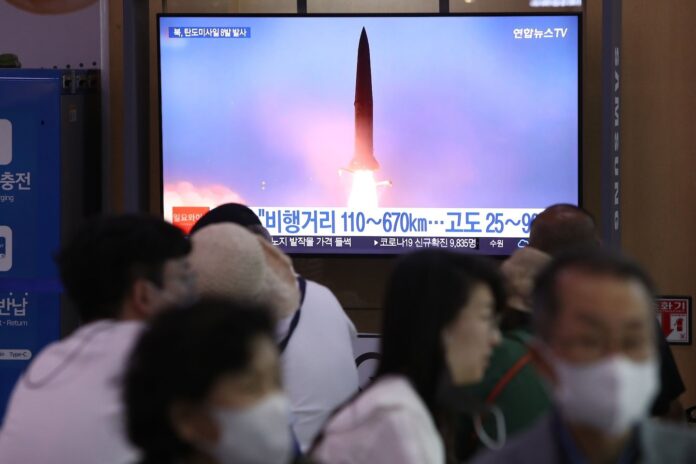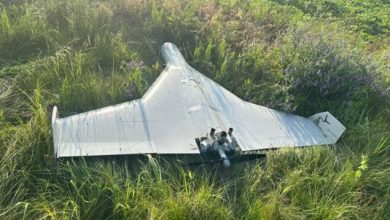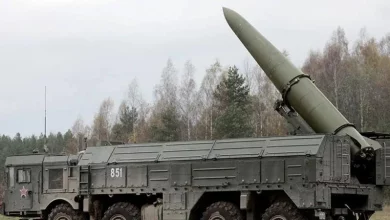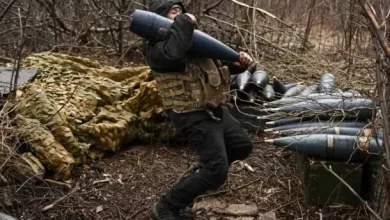Analysis: The race for missiles in Asia’s danger zone

This is a big change for Japan. The current debate is not about missile defense, but whether to attack enemy bases aggressively. The Fumio Kishida government is aiming to build up its arsenal amid questions about its counterattack capabilities. This is a controversial issue in a country whose constitution renounces the “right of belligerency”.
Japan hasn’t forgotten the North Korean missile that flew over Japan five years ago, at the height of tensions between the regime of former President Donald Trump and Kim Jong Un. A Chinese projectile landed in Japan’s exclusive economic zone, while Taipei said on Wednesday that Ukraine is stockpiling US-made weapons used to hold off Russian forces to deter China. rice field. There are no more risks as Japan plunges into a generational debate over the possibility of doubling her defense budget.
Stephen Nagy, a senior associate professor of international relations at Tokyo’s International Christian University, said North Korea’s “saturation” strategy of firing multiple missiles meant that any defensive shield could be overwhelmed. He said the Japanese government was afraid to do so. That led to the idea that the security services would strike first. “A first-strike capability would give Japan the ability to threaten North Korea if North Korea continues to act provocatively,” Nagy said, adding that this capability was aimed first and foremost at North Korea, not China.
The legality of when and how Tokyo can utilize this capability under its pacifist constitution is still unclear. Hamada reiterates recent statements by highlighting the many ballistic missiles deployed by countries surrounding the United States. He described it as the most difficult time since the end.
He wants all options on the table, including the Counter-Strike feature. There is one, and this figure will increase even more when additional costs are taken into account. Reports say Japan could consider deploying more than 1,000 of her missiles, which would give it the ability to strike China as well as North Korea and Russia. But these weapons remain conventional, and Kishida sticks to his longstanding principle of refusing to even have US nuclear weapons in Japan.
In neighboring South Korea, the government has rejected calls to freeze the deployment of US-made missile defense shields. Lockheed Martin’s Terminal High Altitude Defense System (Third) was designed to protect South Korea from attacks from North Korea. Instead, when the deployment was announced in 2016, it became the biggest obstacle to Beijing-Seoul relations in decades.
China, fearing that the system would allow the United States to monitor its capabilities, declared Saad to be a threat to the status quo. Without offensive strike capability, the system allowed Beijing to declare an unofficial trade war against South Korea, order Lotte Group and others to suspend operations on false grounds, and stop selling package tours to South Korea. This is putting pressure on tourism revenue and further hurting the K-pop business.
It was an extraordinary moment in China’s assertiveness, which should have warned the United States about how Beijing was treating its neighbors. Agreeing with China’s demands in policy only encouraged future development of this strategy. No additional third deployments, no participation in US-led missile defense. It is not involved in the Tripartite Pact with Japan and the United States.
His successor, Yoon Seok-yeol, has promised an expansion of the Third System. There is no indication that it will happen anytime soon, but the Yoon administration rejected the three nos, saying the issue was “non-negotiable.” said.
Perhaps less of an issue now: Covid-zero Beijing won’t be able to completely shut off tourists to South Korea this time around. Even with the decline, the threat from North Korea hasn’t gone away. North Korea will launch more ballistic missiles in 2022 than in any other year.
Seoul doesn’t need to be reminded of threats at its borders, but Mr. Yoon presents a clearer approach to Pyongyang’s provocations than Mr. Moon’s clumsy attempts at reunification. Polls show that more than 70 percent of South Koreans want their country to develop its own nuclear weapons, which it does not currently have. Similarly, after years of warning of the threat of China’s expansion and doing little to contain it, Russia’s invasion of Ukraine has revealed the region where Japan lives. After essentially abandoning diplomatic efforts to resolve its long-standing territorial dispute with Russia, Japan must prepare for further cooling in relations.
How China’s leader, Xi Jinping, will approach the two countries after securing a third term as leader—whether to try to reconcile or pose more threats—is also crucial. Things are just heating up in the danger zone.





